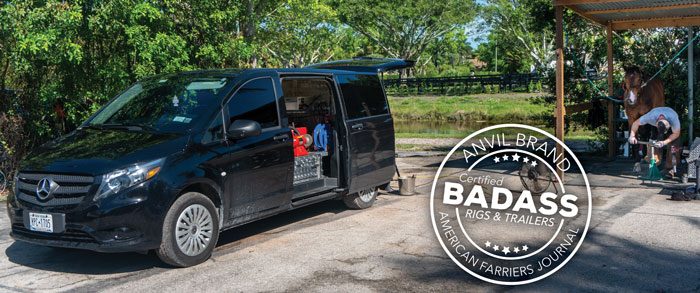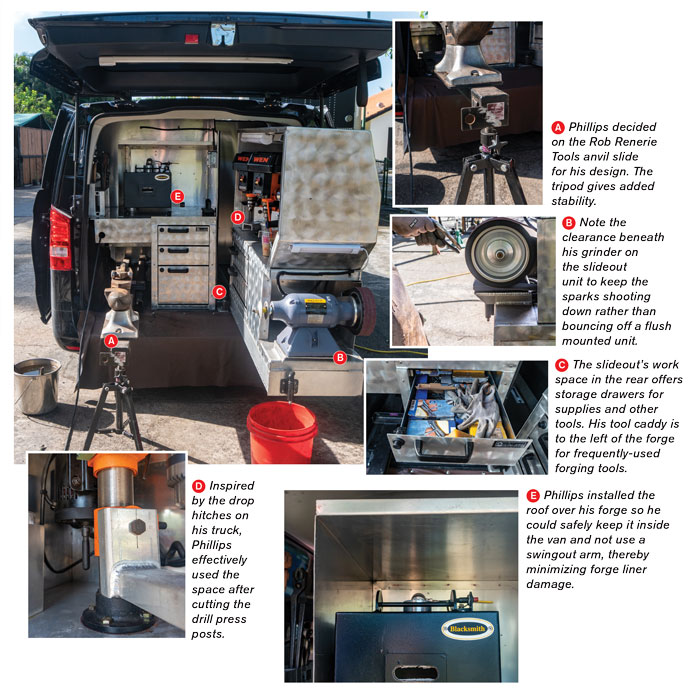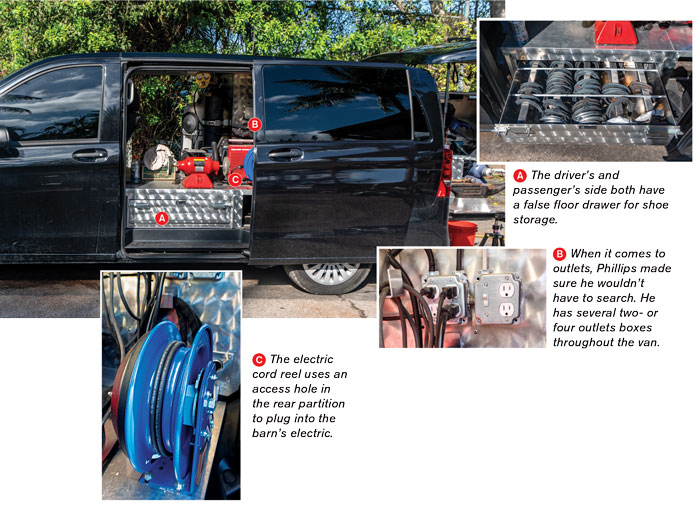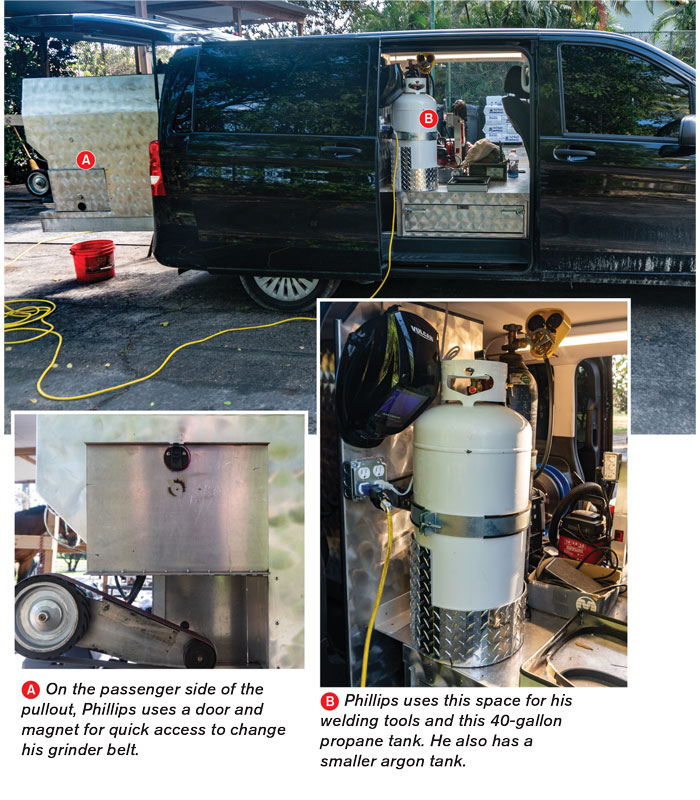BADASS RIGS & TRAILERS
In 2022, we will showcase standout vans, bodies and trailers in the magazine and on AmericanFarriers.com. To see a video showcasing this rig and on future trucks and trailers, visit AmericanFarriers.com/rigs.
Mike Phillips’s original goal wasn’t to outfit his new work van. But after finding out how long he’d have to wait to have a manufacturer build and install the work, the South Salem, N.Y., farrier realized he’d have to do the build to have it ready for the beginning of the 2021 show season.
A farrier for 17 years, Phillips’s practice delivers footcare for sport horses in New York and South Florida. He spends 2-week stretches in each destination, balancing the clients who don’t travel and those who split seasons.
Easy to Fit
The first thought with switching to a van is the improved fuel usage compared with a truck and Purdybilt F3 trailer. With fuel prices climbing in early spring 2022, Phillips is happy with the improved miles per gallon (20 loaded, 26 unloaded) that the converted 2019 Mercedes Metris cargo van has logged, However, fuel efficiency wasn’t his primary goal with the purchase. Instead, he liked the van because it helps maneuverability at his Wellington barns.
“I like this more than the trailer because the barns here in Florida are very active, but can be tight on space,” he says. “You want to have a small foot print down here. There is always activity like a hay truck or maybe a vet is already working at a barn.
“I saw the vans used by farriers in Holland, which made a lot of sense to me. Also, it doesn’t look like a work van. In Wellington, there are some communities with regulations against commercial vehicles kept at residences, so it is one less thing to worry about if I bought or rented here.”
To outfit the van, Phillips measured the dimensions, then drew the design. Other than the drawers, Phillips did the remaining fabrication. He installed all of the features. Phillips built the remaining components. An electrician installed the electrical needs. The slide-out work station is a slick feature in the rear of the build that smartly used the smaller van space.
Priorities Drive Design
When thinking through a rig design, Phillips recommends first prioritizing what is most important for your work. For him, he wanted sun and rain protection, which is offered from the rear door when lifted above the rear layout.
This is Phillips’s secondary rig, so he expects he will leave it permanently in Florida after the current show season. He has a few more projects with the van, including hooking up an inverter and building a partition that will separate the storage area from the seats. But those additions are shelved for now.
“I’m hoping when things slow down on the show circuit, I can drive the van north and find some days to make those changes,” he says. “But not now — the van needs to make money.”












Post a comment
Report Abusive Comment